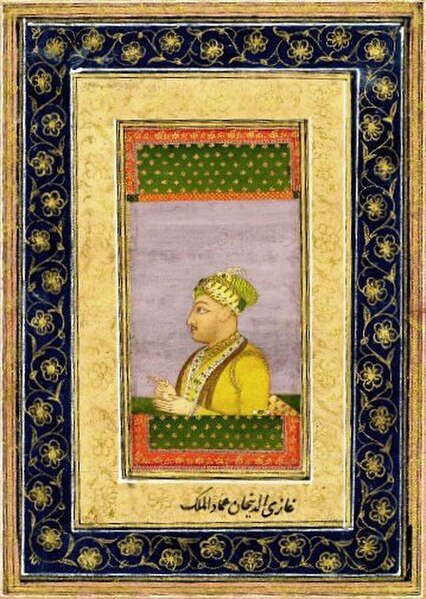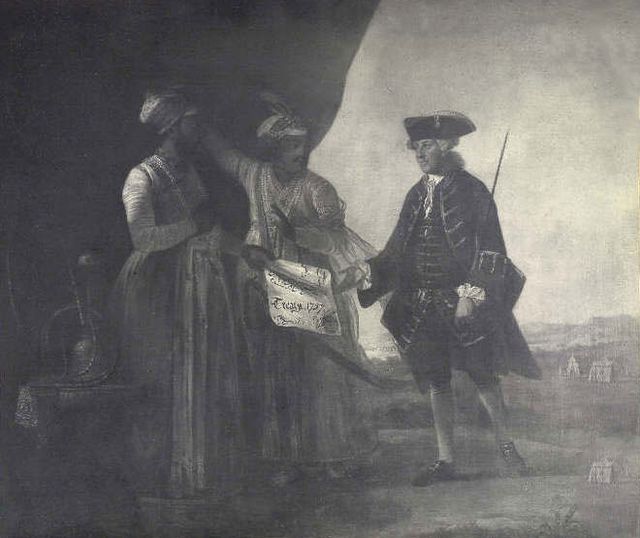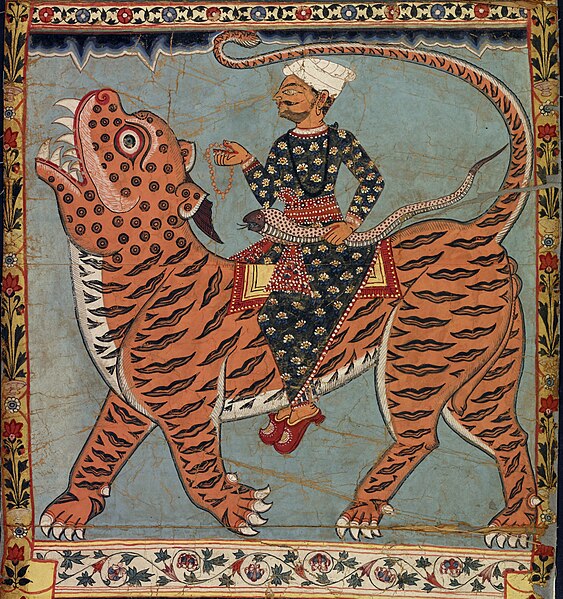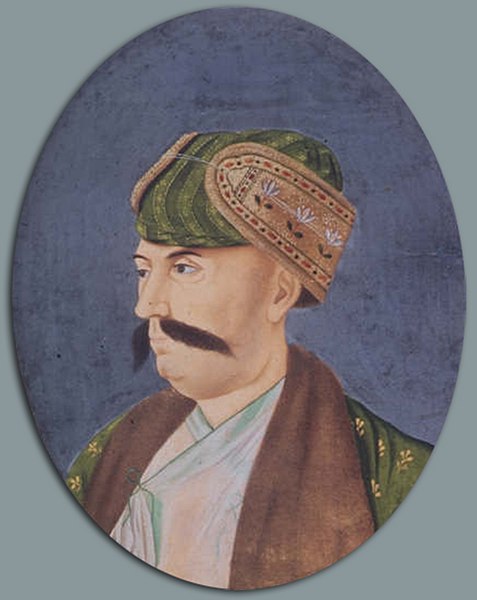Shah Alam II, also known by his birth name Ali Gohar, or Ali Gauhar, was the seventeenth Mughal emperor and the son of Alamgir II. Shah Alam II became the emperor of a crumbling Mughal Empire. His power was so depleted during his reign that it led to a saying in the Persian language, Sultanat-e-Shah Alam, Az Dilli ta Palam, meaning, 'The empire of Shah Alam is from Delhi to Palam', Palam being a suburb of Delhi.
Imad-ul-Mulk was the regent imposed by the Maratha Confederacy in 1757, who assassinated Alamgir II and prominent members of the imperial family, within the Maratha controlled city of Delhi; Shah Alam II managed to escape to safety with the Nawab of Awadh.
Mir Jafar, his son Miran and Ramnarian refused to submit to Shah Alam II, who initiated the Bengal War causing the eventual intervention of the East India Company.
Mughal era illustration of Pir Ghazi of Bengal, during the 18th century.
Shuja-ud-Daula served as the leading Nawab Vizier of the Mughal Empire, during the Third Battle of Panipat and the Battle of Buxar
Mirza Aziz-ud-Din Muhammad, better known by his regnal name Alamgir II, was the fifteenth Mughal emperor from 1754 to 1759. He was the son of Jahandar Shah.
Portrait by Sukha Luhar, c. 1756
Imad-ul-Mulk, a persecutor of the Mughal imperial family, holds a banquet.
Patthargarh fort (literally meaning: "stone stronghold") outside Najibabad, built by Najib ad-Dawlah in 1755, during the reign of the Mughal Emperor Alamgir II.
Ahmad Shah Durrani.








